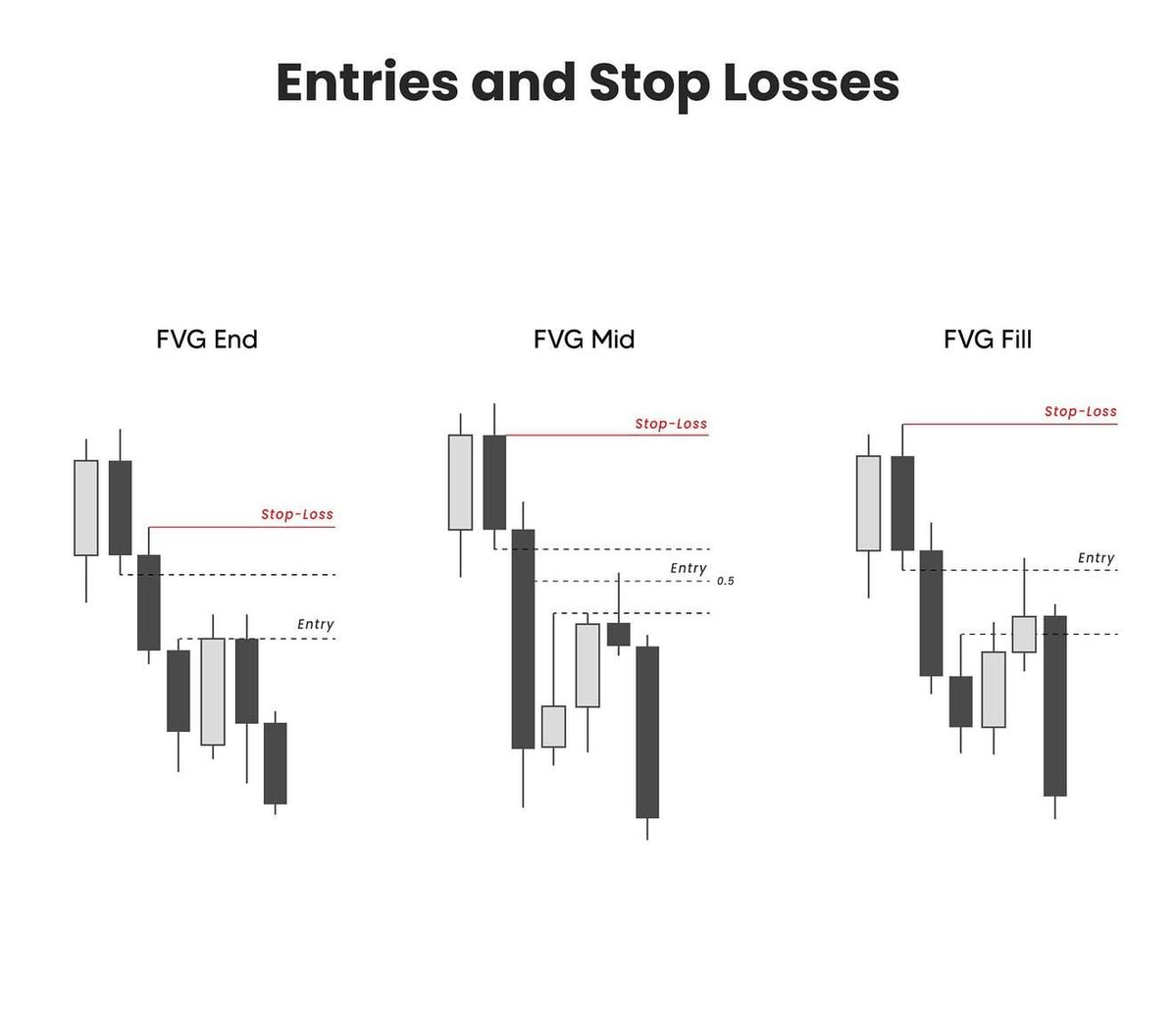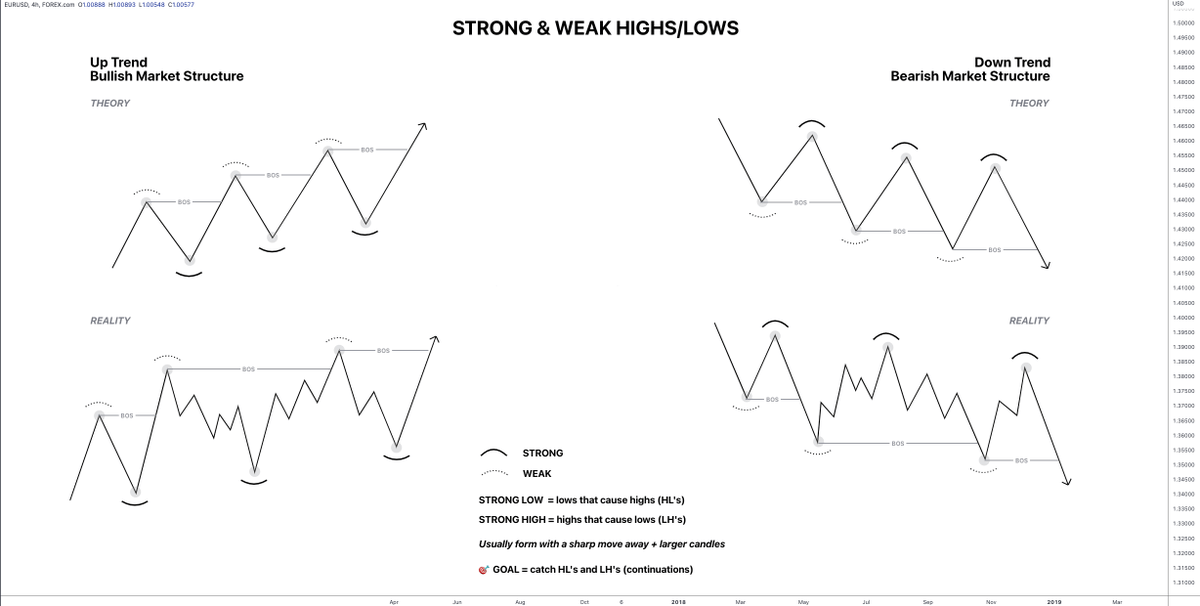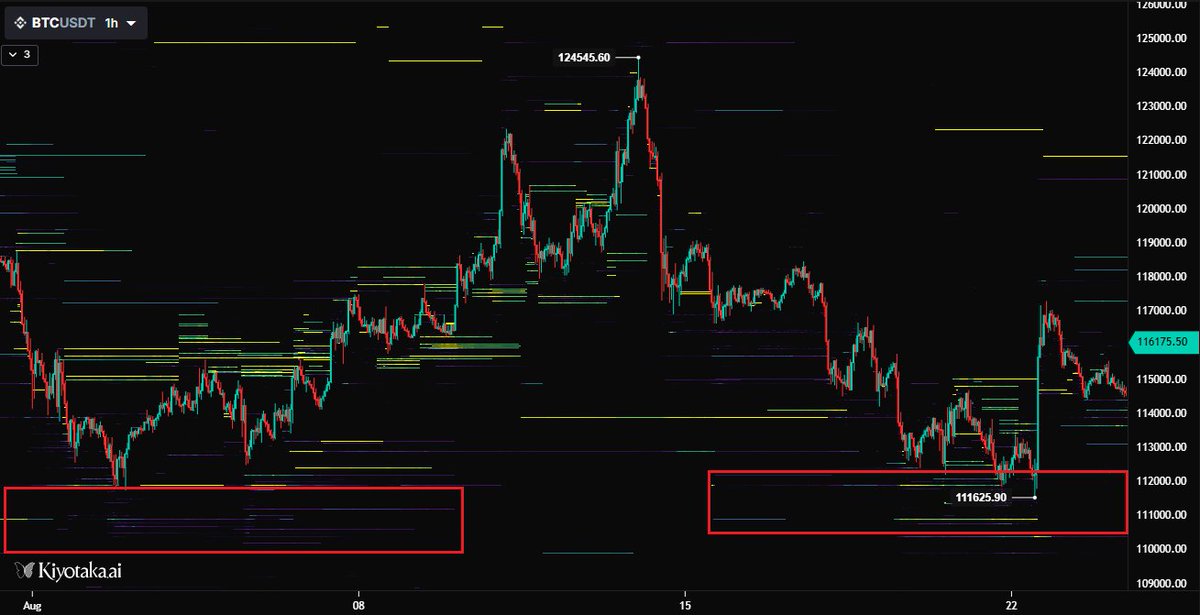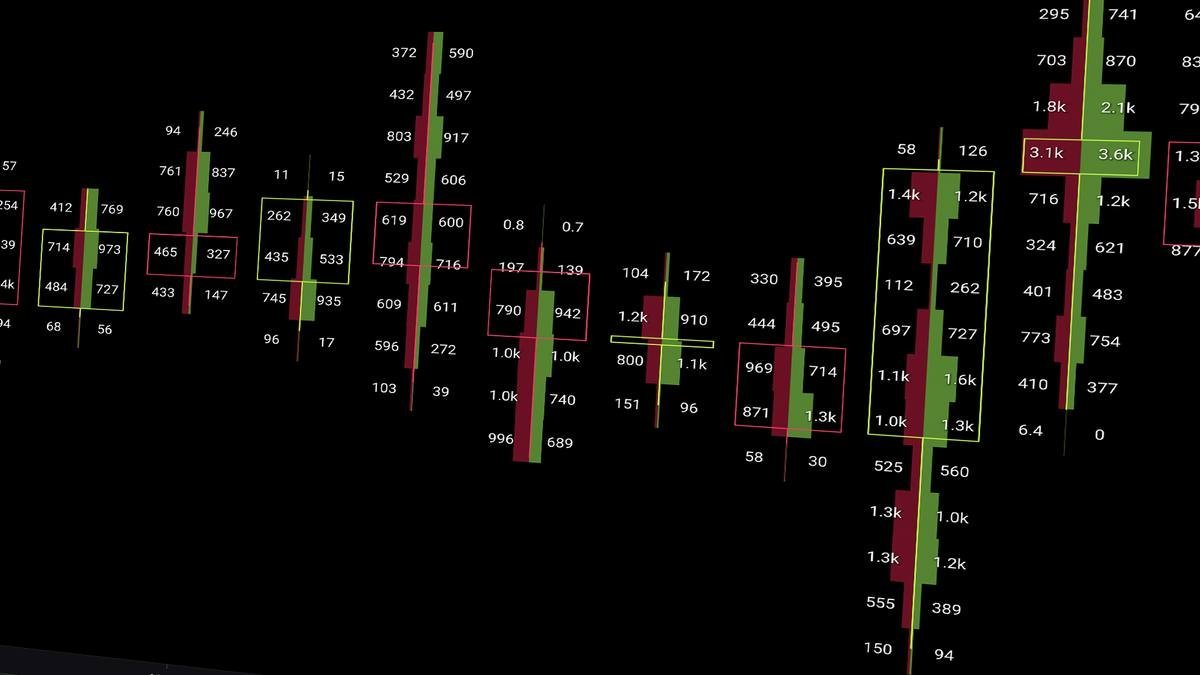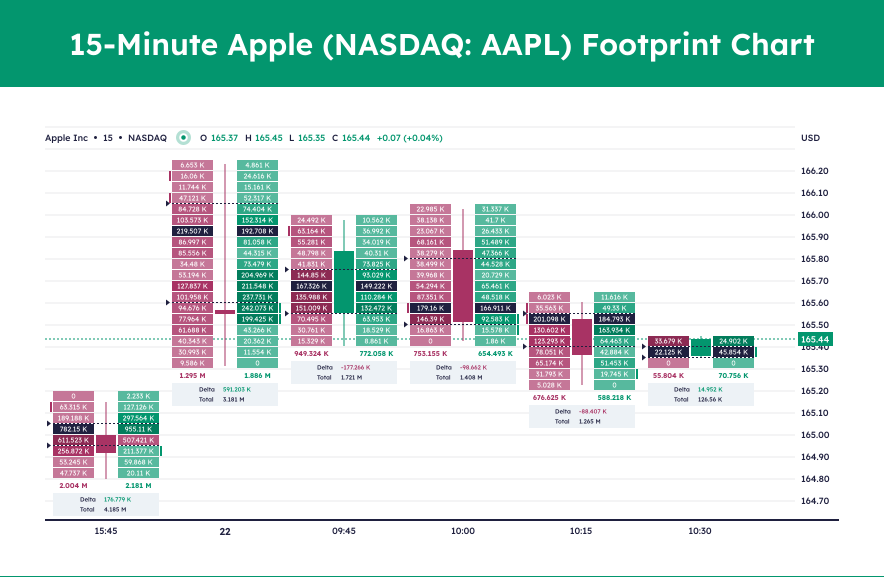In this THREAD I will explain "FVG"
1. What is a “FVG”
2. Types of FVG
3. Inversion FVG
4. How to identify FVG
🧵(1/11)
1. What is a “FVG”
2. Types of FVG
3. Inversion FVG
4. How to identify FVG
🧵(1/11)

1. What is a “FVG”?
Fair Value Gaps are imbalances caused in the price, which will eventually be fulfilled.
When sellers are dominant, Bearish FVGs are created (SIBI)
When buyers are in control, Bullish FVGs are created (BISI)
Fair Value Gaps are imbalances caused in the price, which will eventually be fulfilled.
When sellers are dominant, Bearish FVGs are created (SIBI)
When buyers are in control, Bullish FVGs are created (BISI)

1.1 Bullish FVG
A Bullish FVG forms on a second rising candle between the high of the first candle and the low of the third candle
FVG's occur when there's a significant price difference between the close of one period and the opening of the next
A Bullish FVG forms on a second rising candle between the high of the first candle and the low of the third candle
FVG's occur when there's a significant price difference between the close of one period and the opening of the next

1.2 Bearish FVG
A Bearish Fair Value Gap forms on a second declining candle between the low of the first candle and the high of the third candle
A Bearish Fair Value Gap forms on a second declining candle between the low of the first candle and the high of the third candle

2. Types of FVG
There are several types of FVGs:
Bullish, bearish, continuation, reversal…
I will explain the following types:
BISI, SIBI, Inverted FVG and BPR
There are several types of FVGs:
Bullish, bearish, continuation, reversal…
I will explain the following types:
BISI, SIBI, Inverted FVG and BPR

2.1 BISI
Buyers are in control.
The gap of imbalance will be between the first candle high and third candle low.
It’s formed by a 3 candle pattern, in which the second candle is the one with the highest volume.
Buyers are in control.
The gap of imbalance will be between the first candle high and third candle low.
It’s formed by a 3 candle pattern, in which the second candle is the one with the highest volume.

2.2 SIBI
Sellers are in control.
The gap of imbalance will be between the first candle low and third candle high.
It’s formed by a 3 candle pattern, in which the second candle is the one with the highest volume.
Sellers are in control.
The gap of imbalance will be between the first candle low and third candle high.
It’s formed by a 3 candle pattern, in which the second candle is the one with the highest volume.

3. Inverted FVG
Failed FVG's will act as reactions zones for price (as support or resistance)
SIBI = Acts as support
BISI = Acts as resistance
Failed FVG's will act as reactions zones for price (as support or resistance)
SIBI = Acts as support
BISI = Acts as resistance

3.1 BPR
Balanced price range (BPR) is the area on price chart where two opposite fair value gaps overlap.
To identify the BPR you have to mark the FVG on the sell side of price and another FVB on the buy side of the price.
Balanced price range (BPR) is the area on price chart where two opposite fair value gaps overlap.
To identify the BPR you have to mark the FVG on the sell side of price and another FVB on the buy side of the price.

4. How to identify FVG's
- Use HTF to identify the more reliable setups
- Look for impulsive moves (strong directional trend with volume)
- Mark the imbalance zones (this area will represent the FVG)
- Wait for a price reaction into the FVG
- Use HTF to identify the more reliable setups
- Look for impulsive moves (strong directional trend with volume)
- Mark the imbalance zones (this area will represent the FVG)
- Wait for a price reaction into the FVG

4.1 How to identify FVG's
- Focus on HTF FVG’s
- Must have surpassed previous FVG's
- Consecutive FVG's in the same direction
- Use OB's as confluence
- Focus on HTF FVG’s
- Must have surpassed previous FVG's
- Consecutive FVG's in the same direction
- Use OB's as confluence

• • •
Missing some Tweet in this thread? You can try to
force a refresh







